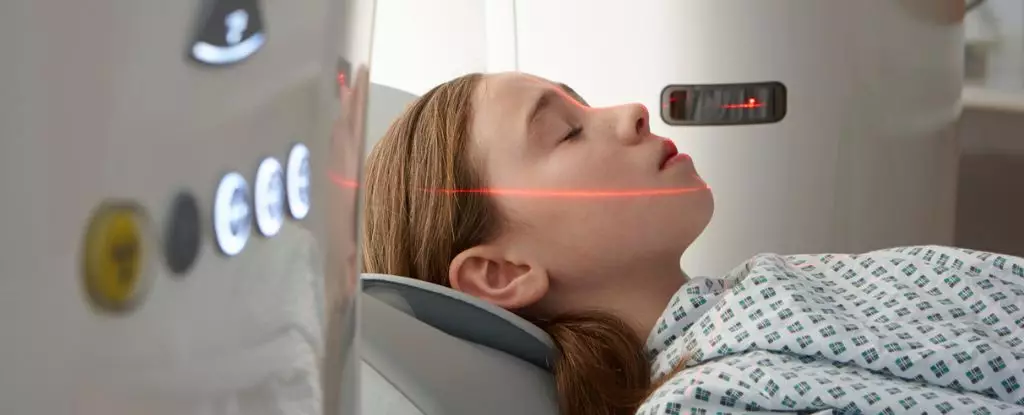The medical landscape is experiencing a revolution with innovations such as computed tomography (CT) scans, which are lauded for their ability to detect conditions that ordinary x-rays might miss. As usage surges, with a 30% increase in the past decade, the medical benefits of CT imaging are clear. However, scientists are upping the stakes—waving a caution flag over the potential, albeit theoretical, risks associated with low doses of ionizing radiation. The double-edged sword of medical advancement demands our keenest attention as we navigate this complex issue.
Rising CT Usage: A Double-Edged Sword
The argument in favor of CT scans often hinges on alarming statistics: they can unveil otherwise hidden ailments, potentially saving countless lives. Yet, the stark reality is that these scans could also lead to future health consequences due to ionizing radiation exposure. While an individual’s chance of developing cancer from a single CT scan is typically described as negligible, the worry emerges when considering the collective exposure across a population. Researchers now speculate that such scans could be responsible for as much as 5% of all cancer diagnoses in the United States.
This hyper-increase in CT scans has researchers like Rebecca Smith-Bindman from UCSF calling for an urgent dialogue. The crux of the matter lies in the tension between immediate medical necessity and the long-term health consequences of radiation exposure. As patients, we are often encouraged to prioritize our well-being, but it’s equally vital to question whether we acquiesce to the traditional medical ethos without a full understanding of what’s at stake.
The Numbers Behind the Concern
Forecasting from data spanning across hospitals and imaging facilities, experts predict that around 93 million CT scans will be conducted in the United States in 2023 alone. If these assumptions hold any weight, this translates to an alarming estimate of 103,000 future cancer cases tied to these diagnostic procedures. The implications of such information beg the question: when does the pursuit of medical interventions become a double jeopardy?
This dichotomy lies at the heart of the debate, veering between the urgency of necessary medical diagnostics and the often-underestimated risks posed by repeated exposure to radiation. While technologies continue to evolve, the current understanding of low-dose radiation’s implications echoes historical tragedies, such as the atomic bomb survivors and nuclear power plant incidents. Similarities can be drawn in analyzing the risks, but we remain in the thrall of speculation.
Understanding Research Gaps and Variability
Most discussions around cancer risk tied to radiation rely heavily on long-term studies of populations subjected to high doses, rather than those receiving low, clinically-justifiable exposures. As evidenced by the findings on Hiroshima survivors, even a seemingly minimal amount can lead to increased cancer odds over a lifetime. However, extrapolating from these historical contexts to the world of CT scans is laden with complications, due not only to differing exposure levels but also due to variations in equipment and patient demographics.
As researchers delve deeper into understanding how low-level radiation interacts with biological systems, they highlight a concerning fact: children and adolescents appear to be at a higher risk. The implications of this are profound, as young patients receiving CT scans for urgent care may find themselves facing future health issues tied to their medical history. This reality raises pressing ethical questions about safeguarding the health of vulnerable populations while still delivering essential care.
The Call for Caution—A Balancing Act
In the face of alarmingly high figures and predicted future cases, experts like radiation specialist Pradip Deb from RMIT University argue for a reevaluation of CT scan protocols. Should we err on the side of caution, avoiding unnecessary scans when alternative methods prove effective? The prevailing sentiment is one of vigilance, underscored by the need to weigh potential benefits against risks.
This intricate balancing act between leveraging technological advancements and protecting patient welfare is paramount. Naomi Gibson, president of the Australian Society of Medical Imaging and Radiation Therapy, reinforces this sentiment, asserting that while we must remain conscious of radiation exposure, this awareness should not deter doctors from employing CT scans for justified cases. This nuanced perspective underscores the importance of clinical judgment in imaging decisions.
While CT scans remain invaluable in modern medicine, they are not without risk. As usage continues to rise, a careful examination of their implications is not merely prudent; it is a necessary advocacy for patient safety in an evolving healthcare paradigm. Our vigilance could mean the difference between immediate answers and long-term health repercussions.


Leave a Reply